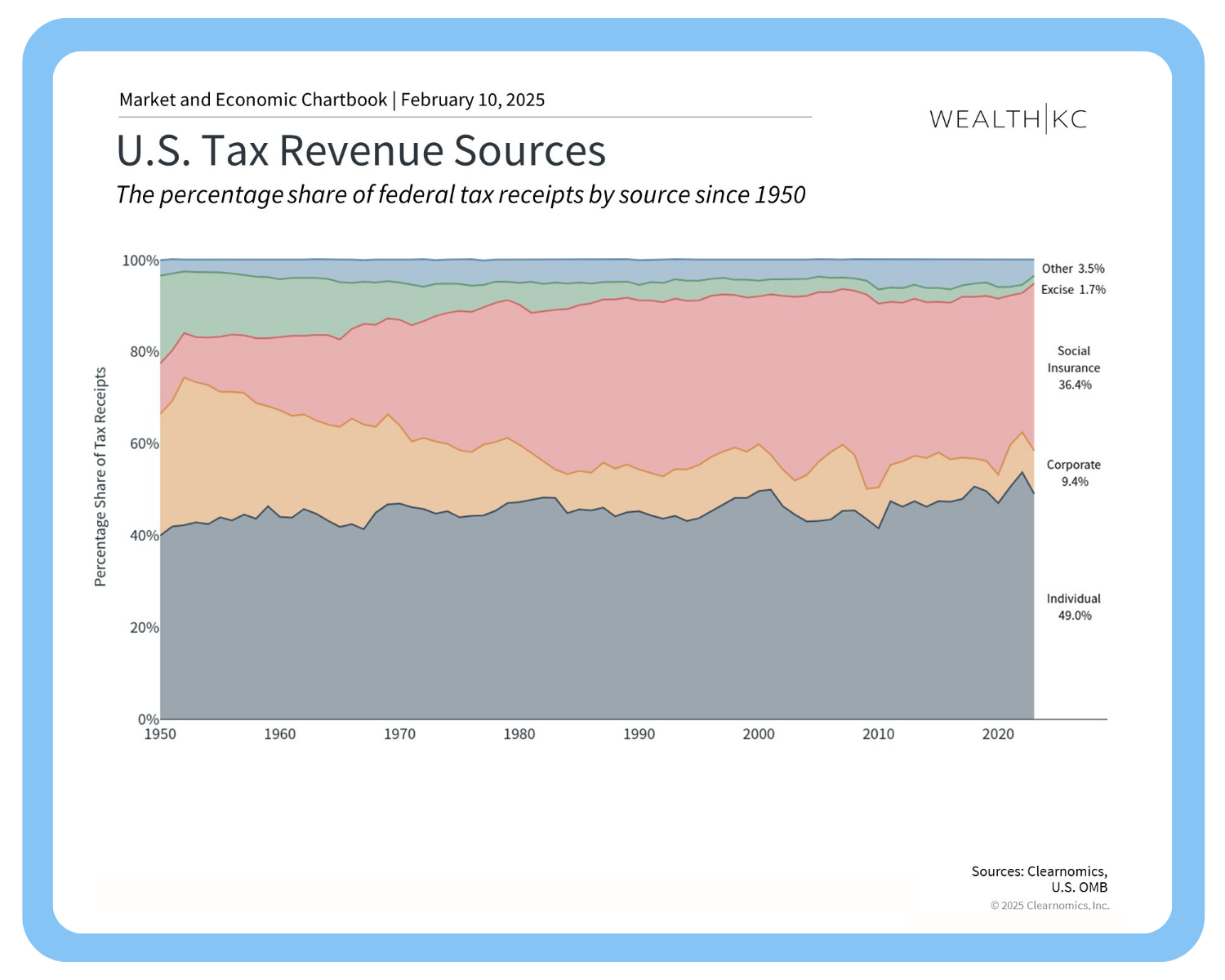What Tariffs and Trade Wars Mean for Long-Term Investors
Investors have faced several market concerns early in the year around tech stocks, interest rates, and government policy. Among these, it’s no surprise that trade policy has emerged as particularly significant for markets as President Trump launched various trade measures, including tariffs on Canada, Mexico, China, and the European Union.
So how should investors react to these news headlines?
The U.S. runs a significant trade deficit.
For long-term investors, it's important to stay calm and focus on what you can control as the situation unfolds. Headlines change quickly, and just because tariffs are threatened doesn’t mean they’ll actually happen. The Trump administration uses tariffs not just to protect American industries but also as a negotiation tool.
The U.S. has a long history of using tariffs to protect domestic industries, a practice known as protectionism. This dates back to the Industrial Revolution, when tariffs helped support American manufacturing. One major example was the McKinley Tariff of 1890, which raised import taxes to nearly 50% on many goods. Another was the Smoot-Hawley Tariff of 1930, which worsened the Great Depression by slowing global trade.
After these events, the U.S. shifted toward more open trade, leading to the creation of international trade organizations. In theory, free trade helps economies grow by allowing countries to focus on what they do best and trade for what they need. However, this also led to American job losses as manufacturing moved to countries with lower wages.
In many ways, the pendulum has swung back toward protectionist policies, with President Trump's renewed focus on using tariffs as a key policy tool, just as he did during his first administration. The chart above shows that the U.S. operates with a significant trade deficit since we import far more than we export.
This pattern of increasing tariffs has raised concerns about a growing trade war—a situation where countries keep imposing tariffs on each other, potentially, hurting global trade and economies.
The role and importance of tariffs have changed over time.
Stock markets often overreact to tariff news, but the real economic impact is usually small. During Trump’s first term, markets performed well despite trade war fears. The 2018-2019 disputes led to trade deals like USMCA and an agreement with China instead of major global issues.
Tariffs contribute just 1% to 2% of government revenue, making them minor compared to taxes. However, some experts argue that improving the trade balance could boost U.S. manufacturing, job growth, and reduce foreign debt.
A trade deficit isn’t all bad—it reflects the underlying strength of the U.S. economy and consumer purchasing power. When Americans have more disposable income, they can afford to buy more imported goods, naturally leading to a larger trade deficit.
The dollar has strengthened since the election.
Trade concerns have led to a stronger U.S. dollar since last year’s presidential election. This happens because trade and currency values are closely connected. When the U.S. imports foreign goods, businesses exchange dollars for other currencies. If imports drop, fewer dollars are sold, making the dollar stronger. As shown in the chart, the dollar has gained value against major currencies in recent months.
Tariffs can also lead to higher consumer prices and inflation. When the U.S. places tariffs on imports, businesses often pass the extra costs to consumers, making everyday items—like electronics, cars, and household goods—more expensive.
It’s important for investors to stay level-headed. While tariffs can create financial uncertainty, impact the dollar, and raise prices, history shows that markets can still perform well despite these challenges.
As always, reach out with any questions you have!



